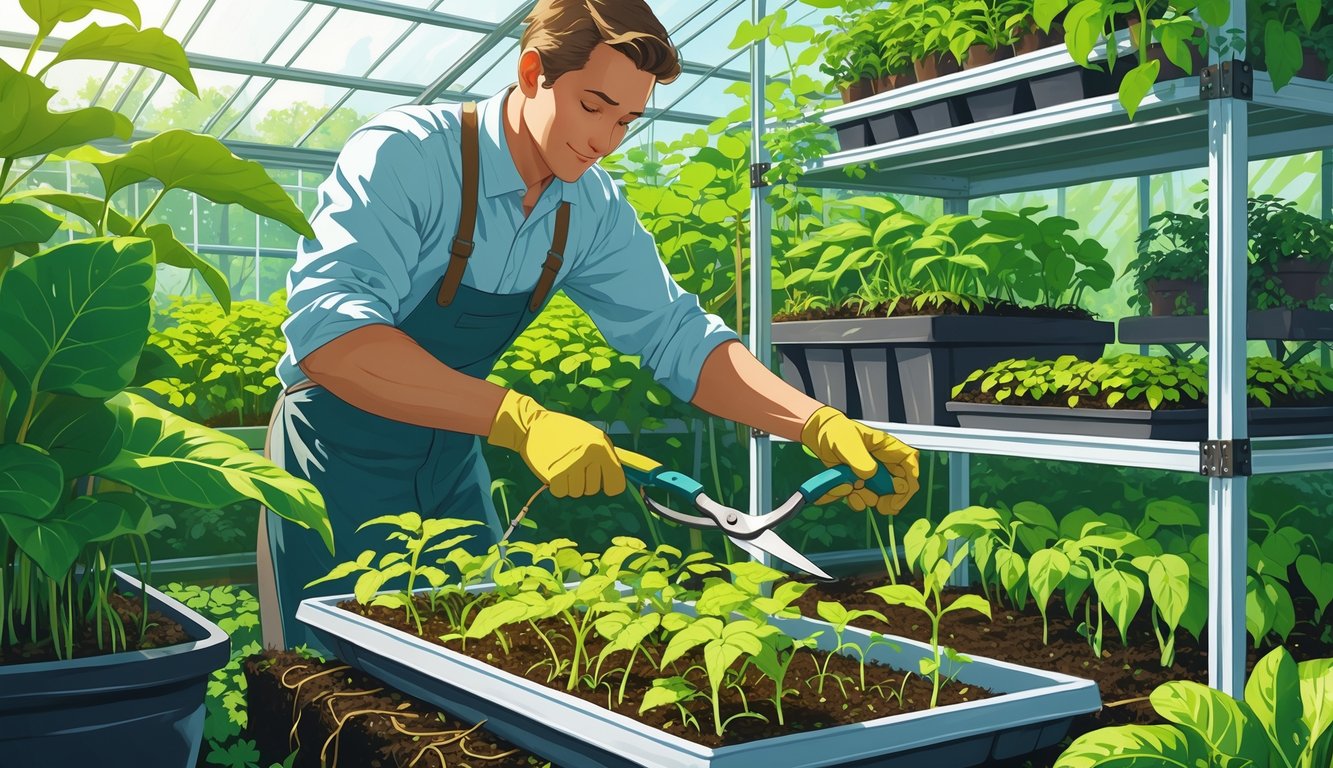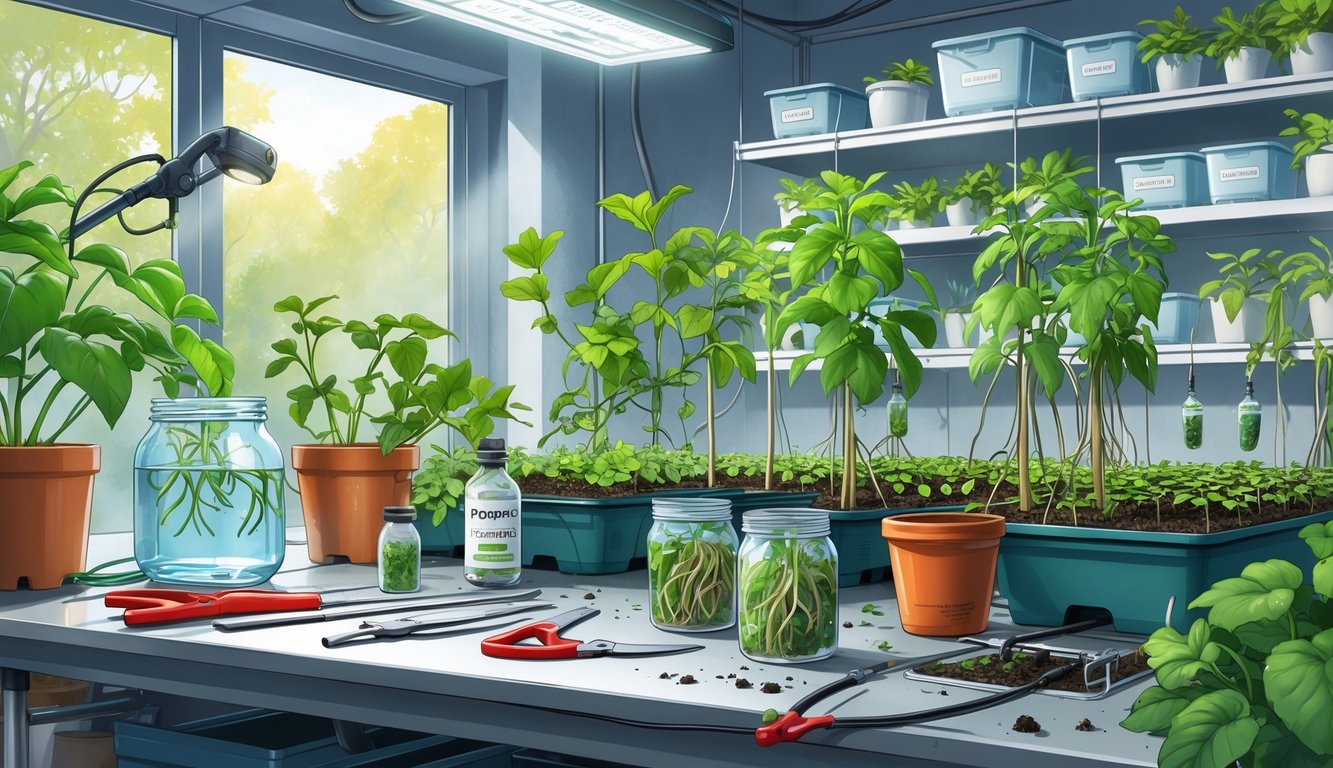
Mastering Sexual Propagation Techniques
How many times has someone handed me a pack of seeds and said, “Just toss them in dirt, you’ll be fine”? Drives me nuts. So much wasted time because nobody checks seed quality, dormancy, depth, or even basic temperature. If you want real yields (or just want to avoid staring at empty trays), you’ve got to do more than dump and hope.
Seed Selection and Quality
Nobody brags about planting mystery seeds from the bottom of a drawer, but everyone does it. Total gamble. Even the best F1 hybrids from Johnny’s or Baker Creek flop if you store them in a damp shed. Seed viability tanks fast.
I test for germination—10 or 20 seeds, damp paper towel, zip bag, 70°F. If I’m not getting 80% in a week, it’s a bad batch. Certified disease-free seeds also save you from weird deaths. I toss anything older than two years for most veggies—especially alliums, parsley, carrots. Old seeds, low yields, end of story.
Scarification and Stratification
People dunk hard seeds in water for five minutes and call it “scarified.” Nope. Lupines, moonflowers, they need sandpaper or a knife nick. I skipped this once and waited weeks for nothing. Some seeds need acid soaks—don’t try that without gloves, though.
Stratification? Get ready for your fridge to smell like mud. Blueberries, milkweed, they need four to twelve weeks in moist vermiculite in a bag. Cheat on the timeline, and nothing sprouts. I printed tables from NC State just to keep track. Miss it, and you’ll be staring at empty pots forever.
Sowing Seeds Effectively
First-timers always bury seeds too deep or let them dry out. Indoors, I scatter fine seeds over damp mix, barely press them in. Big seeds, twice their diameter, max. Ignore this, and you get leggy, weak seedlings or nothing at all. Moisture is everything. Cheap domes trap humidity. No dome? You’ll be misting every day or losing seeds left and right.
Transplanting: under LEDs at 2,000+ lumens, I run a fan or brush seedlings to mimic wind—makes them stronger. I avoid clumps unless I’m in the mood to thin for hours. I label everything, every time. Masking tape got rained on once, so now it’s waterproof tags or nothing.
Maximizing Germination Rates
Temperature paranoia? Not just for newbies. I mean, even tomatoes—supposedly foolproof—won’t really pop unless you hit 75–85°F at the roots. So, yeah, I use those cheap heat mats and sometimes even steal aquarium heater water. Once had a tray of stubborn Capsicum chinense peppers just sitting there, mocking me, until I cranked it to 28°C. (University of Florida’s seed propagation PDF says heat’s more important than humidity—maybe they’re right, maybe it’s placebo.)
People are always soaking seeds in kelp water overnight. Supposed to be magic. Honestly? I’ve never seen brassicas care. Light—now that’s a real thing. Lettuce needs it, onions don’t. I slap loose plastic over trays until I see green, then vent immediately because damping-off fungus is always lurking. Humidity swings, fungus gnats, blights—ugh. I keep a fan going, only water from the bottom, and dump cinnamon everywhere like some anti-fungal maniac. Checking trays as often as I check my phone probably saves more seedlings than anything else.
Near-Perfect Asexual Propagation Strategies
Nothing ever works out like the YouTube tutorials. Plants rot, roots quit, I forget what I was doing. Still, a few tricks do better than just throwing seeds at dirt and hoping. Cuttings, layering, hacking up root balls, and those accidental clones from pots I forgot about—sometimes that’s all that stands between me and giving up. The cuttings room still smells vaguely like hope (and peroxide, let’s be real).
Choosing Between Cuttings and Layering
Everyone acts like stem cuttings are a breeze. Grab scissors, snip, done. Uh, no. Ever actually tried snapping a cane just right? Rooting hormone? Sometimes it works, sometimes it’s snake oil. University of Florida’s extension claims 90% callus on coleus cuttings if you dodge direct sun—maybe I believe it, maybe I just want to. Air layering looks slick in videos, but I’ve lost more cuttings to dried-out moss and forgotten plastic wrap than I want to admit. Runners on strawberries—nature’s lazy hack, just rip and stick. Layering’s less flashy, more reliable with ornamentals, but if you mistime it, fungal gnats throw a rave. My pothos cuttings? All clones, zero drama. Philodendron air layers? They feel tougher, but maybe that’s just me making things up.
Utilizing Division and Cloning
Dividing root clumps—YouTube makes it look like a cakewalk. My hostas don’t care, but peace lilies? Drama queens, brown tips for days. Cloning gets hyped like it’s some sci-fi thing—LED domes, microprop vials, whatever. Unless you have a tissue-culture setup (which, unless you’re rich or in a lab, you don’t), forget about it. Modern Grower says 70% of big nurseries use sterile microcuttings for virus control. Good for them. Division’s great for daylilies: root, shoot, instant plant, no waiting for taproots. Cloning gels? Meh, half the time they just make a mess. “Miracle” solutions—give me a break.
Best Practices for Vegetative Propagation
Overwatering—been there, killed that. Mushy roots, gnats, guilt trip. I treat every tray like it’s a new experiment, scribble notes about what bombs. Cane cuttings? Split nodes root better after six hours of air drying (some ancient pamphlet said so, and it checks out). Leaf cuttings—bury too deep, they crisp up, don’t root. Last fall, I did a peat-perlite 60:40 side-by-side; stem cuttings doubled roots over plain water, just like my old mentor claimed. Division and layering—rot magnets unless you nuke them with fungicide and vent domes every afternoon. People still press cuttings into soggy dirt, then blame bad luck when everything dies. Does anyone trust a humidity dome left alone for days? Even when I do everything right, the most practical advice is: ignore the dog if he tries to dig up your clones, and always tag trays, because memory is a joke.
Advanced Propagation Techniques for Experienced Growers

Every time I try to multiply a fig or citrus rootstock, it’s chaos. Bareroot fails, roots die, tools vanish. Experts act like grafting and budding are magic—maybe they’re right. I skimmed a 2023 UC Davis note (who even edits those things?) and they basically said if you skip these, your yields tank, no matter how many rooting gels or domes you buy.
Grafting for Disease Resistance
January drizzle, coffee going cold, jeans stained—grafting is never glamorous. Think rootstock compatibility is for big ag? Joke’s on you. I’ve watched people lose whole tomato greenhouses to Fusarium, while I get pears to thrive just by sticking a resistant quince on a sad rootstock. My whip-and-tongue skills are a mess, but it still works.
Don’t get hung up on perfect technique. If the cambium lines up mostly right, 95% of grafts take. Sterilize with isopropyl—don’t risk it. Wrap with parafilm, not whatever’s lying around. Label everything—labels disappear, memory fails, mistakes repeat. The best growers? They track rootstock-scion combos in spreadsheets like tax season. Miracle tapes? Nope. Stick with parafilm and your own hard-won intuition.
Budding and Its Benefits
Budding is weird. You stick a tiny bud on a giant rootstock and hope for the best. It’s not grafting’s sad cousin—it’s the high-output move. If you’re drowning in unrooted citrus or rose cuttings, patch budding lets you swap out a whole block in July without touching roots. Efficiency goes nuts. “Advanced Techniques in Plant Propagation” says patch budding gets up to 85% uniform takes, while cleft grafts lag, especially in heat.
Want real results? Cut and prep buds the same day. Slow down, they dry out, union fails. Clean blades, plump buds, rubber strips (not vinyl—it strangles), that’s non-negotiable. Some rose guy in San Joaquin Valley swears by a 60-second bleach dip for budwood—claims his rates doubled. Maybe he’s lying, but I’m not risking black spot. On paper, the difference looks small, but after switching to chip budding, my mandarins survived better and fruited a year sooner. No spreadsheet predicted that, but my back and wallet noticed.